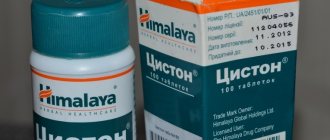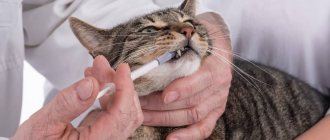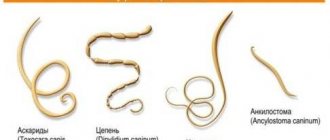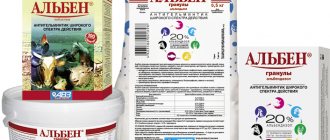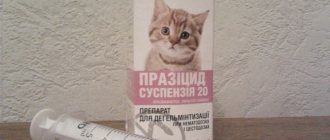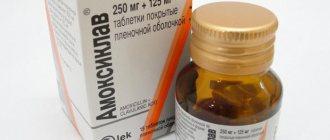It happens that a cat gets into trouble or gets sick - and then a period of treatment begins. Pets don't really like to be treated. They run away, act up, break out, scratch, and owners don’t really like moments when they need to give medicine to their pet.
It turns out that the key to success lies in a simple principle: “Minimum physical coercion and maximum care .
Today we will try to decipher this phrase and teach you how to give medications to your pet correctly.
Step-by-step procedure
If this is your first time giving your cat a pill, you need to have at least a rough idea of how this procedure goes. It is advisable that you have an assistant who carefully but firmly holds the cat. Later, after acquiring a certain skill, you will learn to give medicine to your cat without outside help.
First stage: preparation
Wait until the cat is in a calm mood. Caress her and calm her down. Ideally, the animal should be sleepy - then it will resist less.
If your pet has a temperament, wrap it in a thick towel - this way you will avoid scratches and even bites. Scratches are not so bad, but bites are very painful and take a long time to heal.
Open the tablet away from the cat so that it does not become nervous beforehand. Don't prepare in front of her.
Stage two: medication administration
Carefully open the cat's mouth and place the drug there. Make sure the animal swallows it. If your cat keeps spitting out liquid medicine, adjust it to allow for spillage, that is, give a little more than the veterinarian prescribed. The cat will swallow some of it, and some will have to be wiped off.
Third stage: removing aftertaste
Don't let your cat go right away; she may need help. If the drug was in solid form, pat the animal's throat and give some water.
Bitter suspensions and liquids cause severe salivation. In this case, you can give the cat sweetened water to remove the bitterness. Not all drugs can be used for this procedure, so consult a specialist in advance.
You definitely shouldn’t give treats: you can do that later. It is better to distract the cat by playing or leave him alone - perhaps he will want to wash himself or lie down.
Is it possible to add veterinary drugs to food?
Often, owners whose pets have been prescribed medication in tablet form resort to a simple trick - mixing the medication with food. Should this be done and is it possible to give the tablets to cats along with their food?
It must be remembered that not all drugs are recommended to be crushed before use. Often the capsule must be swallowed whole; it must be absorbed in the animal’s stomach. To avoid making a mistake that could result in a lack of results, it is better to first consult a veterinarian and carefully study the instructions for the medicine.
If there are no prohibitions and it is allowed to pre-grind the drug, there will be no difficulties with taking the medicine. It is enough to put the cat food in a bowl, sprinkle with the powder prepared from the tablet and mix the mixture evenly. With the permission of the veterinarian, you can dissolve the medicine in liquid - water, kefir, sour cream. It is not recommended to use milk - in combination with the drug, it can cause diarrhea in a pet.
An excellent way to treat a cat is to spread a product diluted in sour cream or meat sauce on the nose. Armed with a small spoon, apply a small amount of treat to the very tip of the nose - the animal will certainly lick it off with its tongue. Continue the procedure until your pet eats all the treats. This method has only one drawback - the pet does not always take all the medicine, so a portion of the medicine that is less than the recommended dosage will be ingested.
In what form should the tablet be given?
In their “love” for this method of treatment, the little brothers are very similar to small children. It is impossible to explain to them that a tasteless capsule is good for health. But, unfortunately, even simple prevention against worms will not do without them.
Before giving your furry pet anything from the pharmacy, you should understand the principle of the drug’s action. Read the instructions for use carefully, pay attention to the dosage, how many times a day you need to take it, and also at what time (before or after meals). If after reading you still have questions, you should ask your veterinarian, or at least find answers on the Internet.
There are medicines coated with a special coating. Their goal is to act only some time after entering the body. Such preparations should never be crushed, crushed or separated, otherwise they will lose their properties. Also, if you don't feel confident enough, call someone to help you, and bring a couple of towels just in case.
Often, owners are afraid that the process of taking medications will turn into a complete nightmare. Therefore, professional veterinarians often recommend one of four simple methods.
Trick #1
Ask your doctor if you can mix the medications he or she prescribes with food. There are a number of drugs that lose all or part of their properties if mixed with anything. But if your medicine is not on this list, take a small piece of raw minced meat, meat or any other food that your cat likes. Grind the pill into powder and add to food. This method is very simple. The pet will receive both treatment and a favorite treat as a reward. The only thing worth paying attention to is the serving size of the food. The piece should be of such a size that the cat does not notice the unpleasant taste, but can eat it all in one go.
Trick #2
There is another simple way to give the tablet to a kitten or adult animal. Grind it and then mix with a drop of sour cream. Apply this mixture to your baby's nose. He will feel the sour cream on his nose and lick it off along with the drug. You can use any creamy treat, and if the powder is bitter, then it is acceptable to use something sweet: yogurt or buttercream. Remember that the sweet option is not suitable if you are treating a cat
Trick #3
If you cannot mix medications with food, and the animal refuses to swallow the capsules whole, there is another simple solution. First you need to crush the tablet, then mix it with a small amount of water. Now draw in the resulting liquid using a syringe. The main thing is not to use too much water so that your pet does not choke.
2-3 ml is enough for the powder to completely dissolve in it. Now you need to pour this mixture into the animal. Take your pet on your lap and open its mouth slightly with your thumb and index finger. With your right hand, take the syringe and gradually inject its contents into your open mouth.
Do not pour it all out at once, otherwise the liquid will simply leak out. Once the syringe is empty, allow the cat to close his mouth and lift his head slightly so that he swallows the liquid. Do not use this method if you are not sure that the drug can be mixed with water.
Trick #4
There are cases when it is strictly forbidden to mix the product with water or food. Or, for example, the doctor prescribed not pills, but capsules that cannot be opened. Then another time-tested method comes to the rescue.
Place the cat on a high place: this could be a table, sofa or other furniture. Then secure the animal with your left hand so that it does not run away, and use the fingers of the same hand to open its mouth. If possible, quickly place the drug on the root of the tongue as deeply as possible and allow the animal to close its mouth.
Now lift your chin slightly and massage your throat from top to bottom to provoke the swallowing reflex. Ready! Watch the patient a little: some particularly resourceful ones may spit the pill back out, and then you will have to repeat the procedure.
These methods are quite effective. Of course, there is an option to purchase a special device at a veterinary pharmacy - an introducer, or a tablet dispenser in the Russian style. But most tablets can be given using the first three methods, causing little or no discomfort to the cat.
Feed the cat powder or crushed tablet
To prevent the powder from getting into the respiratory tract and sticking to the oral cavity, you must proceed as follows:
1. Pour the powder onto a saucer, add a little water and stir until mushy.
2. Collect the “porridge” onto the tip of the handle of a regular tablespoon or teaspoon (the main thing is that it is not thick and wide).
3. Place the cat on your lap as described above, open its mouth and gently shake the medicine onto the root of your pet’s tongue.
4. Hold the animal's jaws so that it swallows the drug.
If possible, it is better to mix the powder with boiled egg yolk or a small amount of meat. You can also soak dry food and mix it with medicine.
What time of day is the procedure performed?
It is better to give medications in the morning - before breakfast, unless the instructions for use indicate otherwise. This is done due to the fact that a well-fed cat may vomit after taking the medication. This means that the procedure will have to be repeated. If the medicine needs to be fed several times a day, then be sure to wait 30-40 minutes after eating to avoid vomiting.
If the veterinarian has prescribed two or three doses of medication, it is necessary to consult how to do this: before or after meals. Some medications should be fed to the animal between meals, and some immediately after. In the latter case, it is better to give the crushed drug mixed into food.
When is the best time to give your cat pills?
There are several more recommendations on how to give a cat an anti-worm tablet without much resistance from the animal. To do this, veterinarians recommend giving the medicine in the first half of the day (before the first meal).
Of course, this does not apply to drugs that are strictly prohibited to be taken on an empty stomach. Taking the tablet on an empty stomach is due to several factors:
- if the cat is full, it can easily vomit the tablet;
- It is difficult to feed a cat that has eaten something else - it will resist, while a hungry cat after sleep may not notice the pill disguised in the food.
Special device - peeler
Veterinarians have come up with an unusual but convenient device for delivering tablets to animals. It is called a piller, in the Russian version - a tablet dispenser. The piller can be purchased at a veterinary pharmacy and will come with detailed instructions for use.
The piller looks like a syringe, at the end of which instead of a needle there is a holder for tablets and capsules. It can be used to place medicine precisely down the animal's throat without the risk of it choking. In addition, the cat will definitely swallow the drug and not spit it out.
How to “persuade” a cat to eat a capsule?
Gelatin capsules often stick to the roof of your mouth and begin to dissolve. A person drinks it with water so that it floats to the “right place,” but a cat cannot be forced to drink medicine.
But you can use a little trick: pour a little vegetable oil into a saucer and “roll” the capsule over it. The oil will not dissolve the gelatin, but will allow the cat to quickly and painlessly swallow the drug.
How to feed medicine to a kitten
Due to its size, neither the piller method nor the whole tablet is suitable for small kittens. In general, medications for kittens (as for children) are usually made in liquid form to make them easier to dose. But sometimes the baby needs to be given a hard tablet. What to do in this case?
There is only one option: divide the pill into several parts or crush it. It is better to ask your doctor or pharmacist whether this can be done - some medications must be given strictly in their entirety. Be sure to find a version of the drug that allows you to break or crush the tablet - otherwise, you risk damaging the kitten’s delicate oral and laryngeal cavity.
Emotional mood
One of the mandatory conditions for treatment is to take care of the animal’s emotional state in advance. Before giving a pill to a kitten or adult pet, try to behave calmly and not be nervous. You can simply talk to the animal - the owner’s voice has a calming effect. It is not recommended to chase your pet throughout the apartment; it is better to wait until it comes on its own. It is prohibited to carry out the procedure near the sleeping area, tray or food bowl. Subsequently, the animal will associate them with unpleasant manipulations.
Another requirement is not to call the cat to take the medicine. The animal may decide that the owners are going to feed them, play or just pet them. In the future, the pets will refuse to respond to their owners’ calls.
You should not force an animal to take medicine, especially if a long course of treatment is prescribed. Each time it becomes more and more problematic to give a pill to a cat, so it is recommended to perform manipulations only on a pet that is in a state of calm. If your pet behaves aggressively or restlessly, it is better to postpone taking the drug for a while and repeat after an hour and a half.
Regardless of which method was used to give the cat medicine, it is recommended to end the procedure with pleasant moments for the animal. Stroke, praise your pet, hold it on your lap for a while, if the instructions do not prohibit, treat it with your favorite treat.
Applying a treat
Medicines used for the prevention and treatment of various pathologies have different properties.
The fact is that some pills should be absorbed only in the intestines, bypassing the acidic environment of the stomach. Only then will they be effective and provide the necessary therapeutic effect. Such tablets are usually produced in the form of capsules. The outer layer of this form of medicine protects the main active ingredient from destruction in the stomach. Before giving medication to a cat, the owner should consult a veterinarian about the possibility of mixing the drug with food. Many medications must be given on an empty stomach. You can also find out whether the tablet can be given with food in the instructions.
The tablet should be divided into 4 - 6 small portions and disguised in pieces of sausage, cheese or other cat's favorite food. If the drug does not lose its properties, then the tablet can be ground into powder and mixed with your pet’s favorite treat. Most often, this trick works for animals that are not picky about food.
Method 2. Give in powder
Most cats are very sensitive to foreign substances in their food and refuse to eat, even going on hunger strike. If this is your case, then try crushing the tablet into a powder and then pouring it into the cat's mouth.
Of course, there is no need to wait for the voluntary opening of the mouth - just place your palm on the pet’s head and squeeze the cheekbones on both sides (from the side of the molars). The animal will reflexively open its mouth, at this moment you need to quickly pour the powder deeper, close its mouth, and hold for 2-3 seconds.
There was something wrong with this food, I'm not happy!
Recommendations for cat owners
Taking any medications is quite stressful for the animal. To minimize discomfort in a cat, several aspects must be taken into account:
- Remove the medicinal product from the package out of sight of the animal. Especially if it concerns long-term and regular treatment. Over time, cats will understand what the rustling of the packaging means and will simply hide while taking the medicine.
- Remember that your fear is transferred to animals. So if you walk around holding a pill in your shaking hands and panic while trying to feed the pill to your cat, the animal will smell something wrong and become even more afraid.
- You should never punish your furry friend. The cat refuses the pill not because he wants to annoy you. This is a common reaction of an animal to any coercion. Therefore, you should not scold or hit the cat if it breaks free and runs away.
- Remember that no matter how much a cat loves you, it doesn't mean she can't scratch you. So if you need to give your cat a pill, it's best to have hydrogen peroxide on hand to treat scratches or bites.
- Be sure to praise the animal that ate the pill. A few minutes after taking the medication, give your cat his favorite treat as positive reinforcement.
- There is a small percentage of animals to which it is absolutely impossible to feed the tablet. They start vomiting, foaming at the mouth, etc. In such a situation, it is necessary to consult with a veterinarian about the possibility of prescribing another type of medication (suspensions, powders, sprays, injections).
Can a cat take human medications?
If your cat is sick and you decide to treat your pet on your own, do not rush to prescribe it any medications from your first aid kit. Many medications intended for humans are prohibited from being given to cats!
But, there are a number of exceptions. That is, even an experienced veterinarian can prescribe medications to your cat from a human first aid kit. As a rule, these appointments are completely justified and justified by their effectiveness.
The specialist prescribing such drugs is confident that this drug will not cause side effects and will not harm the animal’s body.
Why are cats given human pills? In our country's pharmacies there is a small selection of effective products for pets. In addition, residents of remote settlements cannot always purchase the necessary drug to treat their animal. In such cases, medicines come to the rescue!
What medications can be given to cats:
- for constipation - “Lactusan” and “Duphalac”;
- “Hofitol” effectively helps with urolithiasis;
- in the treatment of eye diseases, you can use Tetracycline eye ointment;
- for liver diseases, cats can be prescribed “Allohol”;
- to improve digestion - “Mezim”;
- to restore intestinal microflora - “Bifidumbacterin”;
- for the treatment of peptic ulcers of the gastrointestinal tract - "Zantac";
- Insulin is effectively used to treat diabetes mellitus;
- Chlorhexidine is used for skin diseases.
This is not the entire list of drugs approved for the treatment of domestic cats. But, we still strongly recommend not to self-medicate and select medications for your pet only with the attending doctor!
There are some medications that are particularly dangerous to pets that seem quite harmless to people.
List of prohibited drugs for treating cats:
- No-Shpa - can cause paralysis of the limbs;
- sleeping pills – can cause coma;
- iodine – causes anaphylaxis and severe skin burns;
- Aspirin – is fraught with intestinal bleeding;
- Imodium - a cat can die from this drug;
- Valerian and other sedatives - negatively affect the functioning of the heart and can compromise serious mental disorders;
- Paracetamol - negatively affects the liver and kidneys;
- vitamin complexes – often cause allergies in animals.
There are other medications for people that should never be used to treat pets.

